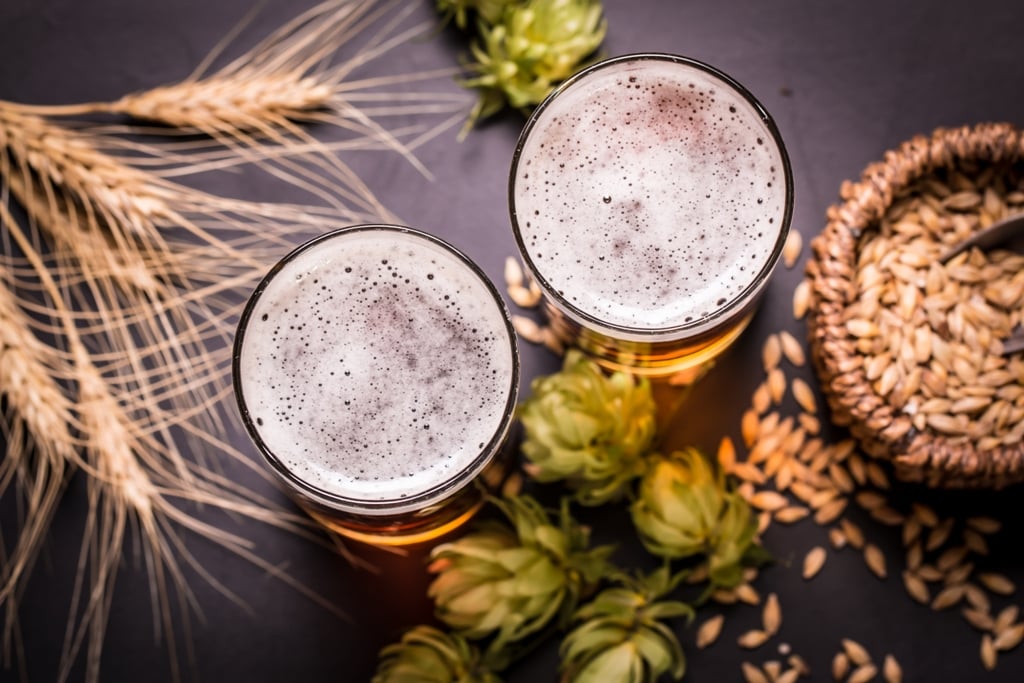This week I take a look at metals, oxygen and how the two can combine to rapidly oxidize and age your beer.

How Beer Ages
All beer has a limited shelf life. The aging of beer involves a number of complex chemical and biological processes, and over time a given beer will most often darken, often form a haze, reduce bitterness, change carbonation, and stale off flavors will develop. Depending on the beer and care taken in brewing, packaging and storing the beer this can happen in a matter of days or over a period of a year or more. Most beers, however, lose their peak flavor and clarity within six months.
Beer that has not been pasteurized can be spoiled by biological processes both from latent bacteria and yeast, but today we’re going to focus on a chemical process called oxidation which is one of the main risks for beer as it ages.
Oxidation in Beer
Strictly oxidation is the loss of electrons from one molecule (the reducer), atom or ion and gain of electrons by another atom , ion or molecule (the oxidizer). We typically associate oxygen with oxidation, but other compounds can also act as oxidizers.
In beer, oxygen itself is not terribly reactive. However when we combine oxygen with metal ions such as copper, iron and maganese the resulting compounds become highly reactive with other compounds in the beer, and produce many of the most common flavors we associate with stale beer. These include aldehydes, keytones, trans-2-nonenol and diacetyl. Most often these compounds result in a stale cardboard flavor in lighter beers or a sherry-like finish in darker beers. This milk-the-funk wiki article has a pretty good page with references on this topic.
Unfortunately highly hopped beers like IPAs are even more at risk. Dry hopping, for example, not only runs the risk of introducing oxygen through the process itself, but the hop additions add iron which can react and cause staling. Hops also contain certain phenols which are also prone to oxidation. This explains, in part, why many of the highly hopped IPAs have a relatively short shelf life for peak flavor.
I’ve written extensively on the importance of reducing oxygen in your finished beer. In addition, I’ve done a few podcasts on the subject including one on Controlling Oxygen with Colin Kaminsky and an older episode on Flavor Stability with Dr Charlie Bamforth. But reducing your total oxygen level is only part of the problem.
Metals in Beer
Where do the metals in beer come from? The two primary drivers are the malts used and the hops, though it is also possible to introduce metals from brewing equipment. Iron, Copper and Manganese are all present in malt, wort as well as finished beers. Zufall and Tyrell (J. Inst Brewing 114(2), 134-142) did a series of experiments adding copper, magnesium and iron at various stages in the brewing process and concluded that Manganese had a larger impact than Copper or Iron in oxidation in the final beer, and that since Manganese comes primarily from malting and mashing it is primarily determined by your choice of malt.
As I mentioned hops can introduce iron ions as well as some polyphenols that are prone to oxidation. So for hop forward beers you need to be particularly careful about lowering oxygen levels in your finished beer.
What can be done?
What can you do to reduce metals, reduce oxygen and increase the long term stability of your beer?
- Take steps to reduce oxygen introduced in the finished beer. I have several suggestions in this article on reducing oxygen.
- Avoid equipment that may introduce metals into your beer. This includes brewing with copper, using a copper chilling coil, any iron or copper accessories, and of course avoid damaging the protective surface on your stainless or using any surface that has rust.
- Consider adding antioxidents. While most beers do have some antioxident compounds that naturally occur there are preservatives you can add, including sulfites typically added as potassium metabisulfite, to prevent long term oxidation. This compound is almost universally used in wines, but less so in beer. Some brewers oppose adding sulfites, and some people are senstive to them, but they can be play an effective role in preservation if used in moderation.
- Consider mash hopping. In a recent podcast with Scott Janish I found out he uses mash hops because they reduce the level of metals in a finished beer.
I hope you enjoyed this week’s article on metals, oxidation and beer. Thanks for joining me on the BeerSmith Home Brewing Blog. If you want to take the guesswork out of brewing, please try my BeerSmith recipe software from BeerSmith.com. Be sure to sign up for my newsletter or my podcast (also on itunes and youtube) for more great tips on homebrewing.